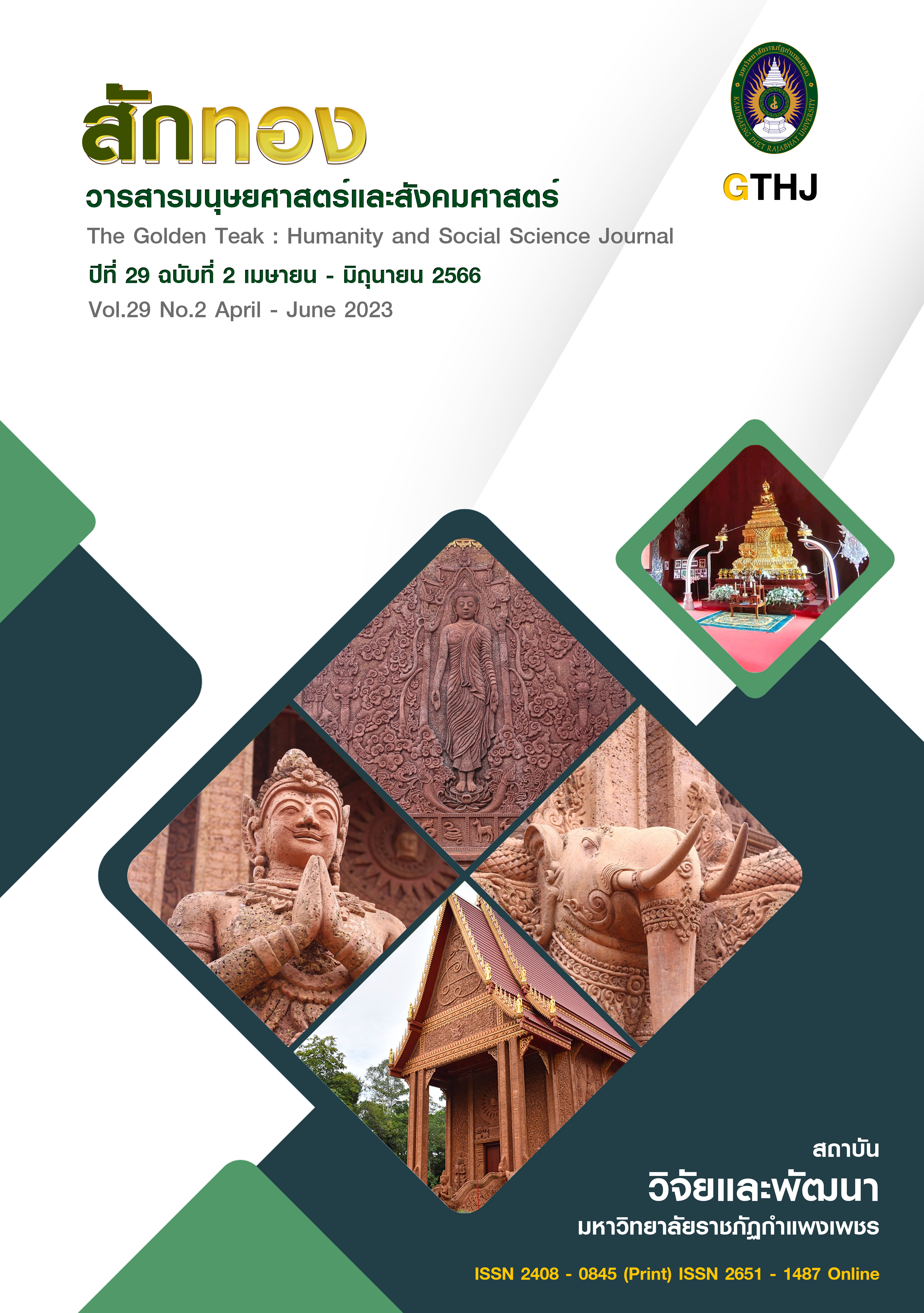A Development of Women's office wear from Tai Yai Woven Fabric by Combination with Thai silk fabric Patchwork and Decorating Techniques
Main Article Content
Abstract
The objectives of this study were to 1) Design and develop women's office wear made from Tai Yai Woven fabric by combination with Thai Silk Fabric Patchwork and Decorating techniques. 2) To evaluate user satisfaction towards women's office wear made from Tai Yai Woven fabric by combination with Thai Silk Fabric Patchwork and Decorating techniques and appropriate decorations. The Populations were 29 women working at Faculty of Industrial Textiles and Fashion Design. Two women's office wear were used in this study. The research instruments used were questionnaires. Data were analyzed by computing mean and standard deviation. The result revealed that 1) In order to develop women’s office wear made from Tai Yai Woven fabric by combination with Thai Silk Fabric Patchwork and Decorating techniques, the prototype was in good-fit, standard grading, back slit, stand -up collar, long sleeve in bell shape. The office wear was in black Thai silk decorated Tai Yai Woven fabric by combination with Thai Silk Fabric Patchwork and Decorating techniques. 2) As a result from assessing satisfaction towards women's office wear made from Tai Yai Woven fabric by combination with Thai Silk Fabric Patchwork and Decorating techniques revealed that prototype No.1 gained highest satisfactory score (x̅ = 4.46, SD = 0.26) which was higher than prototype No.2 (x̅ = 4.34, SD = 0.19). When analyzing into detail, the result showed that the prototype No.1 gained overall satisfaction in product design and product decoration (x̅ = 4.43, x̅ =4.49) received a high level of satisfaction.
Article Details

This work is licensed under a Creative Commons Attribution-NonCommercial-NoDerivatives 4.0 International License.
บทความที่ได้รับการตีพิมพ์เป็นลิขสิทธิ์ของวารสาร สักทอง : วารสารมนุษยศาสตร์และสังคมศาสตร์ สถาบันวิจัยและพัฒนา มหาวิทยาลับราชภัฏกำแพงเพชร
ข้อคิดเห็นใดๆ ที่ปรากฎในวารสารเป็นวรรณกรรมของผู้เขียนโดยเฉพาะ ซึ่งมหาวิทยาลัยราชภัฏกำแพงเพชรและบรรณาธิการไม่จำเป็นต้องเห็นด้วย
References
Autthapak, C. (2008). The elements of art. Bangkok : Wittayapat. [In Thai]
Chonsakorn, S. (2003). Materials used in garment manufacture and decoration. Pathumthani : Faculty of Home Economics, Rajamangala University of Technology Thanyaburi. [In Thai]
Chonsakorn, S. (2010). The figure and garment construction. Bangkok : Tripple Education. [In Thai]
Chemsripong, S. & Petmee, P. (2017). Creating Value Added Products from Local Wisdom : A Case Study of the Ancient Cloth. Phitsanulok : Naresuan University. [In Thai]
Customs Department of Thailand. (2019). Important import product of Thailand according to Asia’s import scheme. [Online]. Available : http://tradereport.moc.go.th/TradeThai.aspx [2020, May 20]. [In Thai]
Kantachot, S. (1985). Home design and decorating. Bangkok : Odian store. [In Thai]
Kongkachuichai, S. (2006). Decorative arts for clothing. Bangkok : Odian Store. [In Thai]
Leesuwan, W. (1989). Thai Arts And Crafts. Bangkok : Tourism Authority of Thailand. [In Thai]
Malisaw, K. (2003). Tai Yai Woven Cloth Products Designing at Ban Mai Mok Cham, Mae Ai District, Chiang Mai Province. Chiang Mai : Chiang Mai University. [In Thai]
Peter, S. (2007). Human and design. Bangkok : Odian Store. [In Thai]
Sadsunk, S. (2020). Materials and technics in fashion. [Online]. Available :
http://elsd.ssru.ac.th/sarawut_ya/pluginfile.php/80/course/summaryคหกรรม%202-5.pdf [2020, March 20].
Srisawat, B. (2004). 30 ethnic groups in chiang rai. Bangkok : Siam publisher. [In Thai]
Saribut, U. (2006). Industrial product technology. Bangkok : Odian Store. [In Thai]
Thailand Textile Institute. (2018). shape of garment. [Online]. Available : http://www.textile.org/th/insign/ detail.193.1.0.html [2020, September 15]. [In Thai]
Thongcharoen, P. (2006). Study on the standard for an environmentally friendly textile industry and local hand weaving in Thailand. Chaingmai : Wanida Publishing. [In Thai]


